Dissecting 5 VR Headsets on the Market
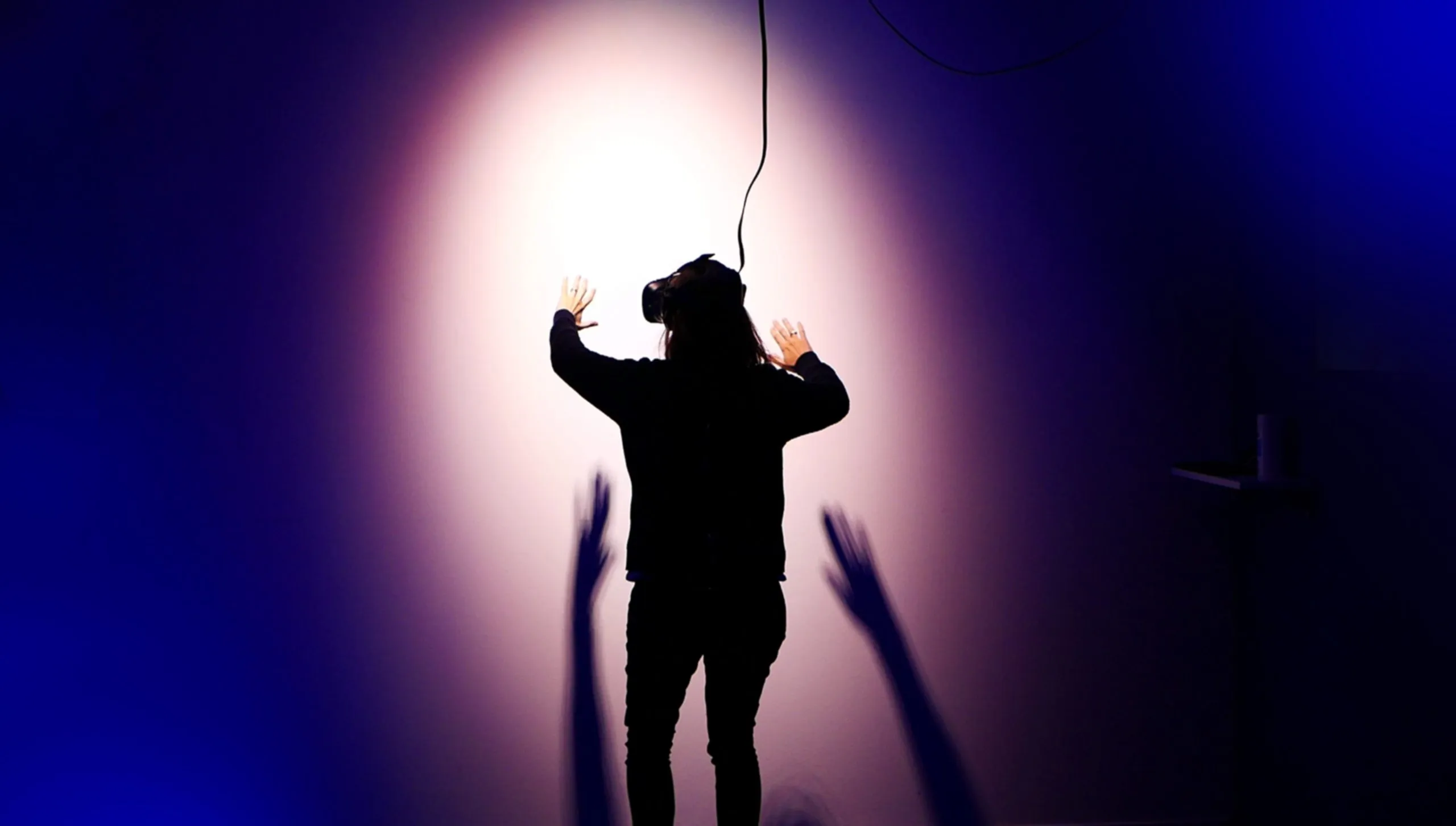
With VR becoming so popular amongst consumers and enterprises, you must be wondering which headsets are best for your needs. Whether you’re into gaming or training new employees, read on for our analysis of 4 extremely popular VR headsets on the market.
Please note: all information has been retrieved from each respective headset’s website, linked in the body of the blog post.
With VR becoming so popular amongst consumers and enterprises, you must be wondering which headsets are best for your needs. Whether you’re into gaming or training new employees, read on for our analysis of 4 extremely popular VR headsets on the market.
The HTC Vive offers four different VR headsets, but we’ll be focusing on their most user-friendly one, the HTC Vive. At $399, the VIVE headset offers a resolution of 1080 x 1200 pixels per eye, or 2160 x 1200 pixels combined, with a refresh rate of 90 Hz.
Along with its 110-degree field of view, the headset also provides eye relief through lens distance adjustment. The headset isn’t normally a wireless one, but the company does offer a wireless adaptor for an additional fee if that’s how you prefer to use the device.
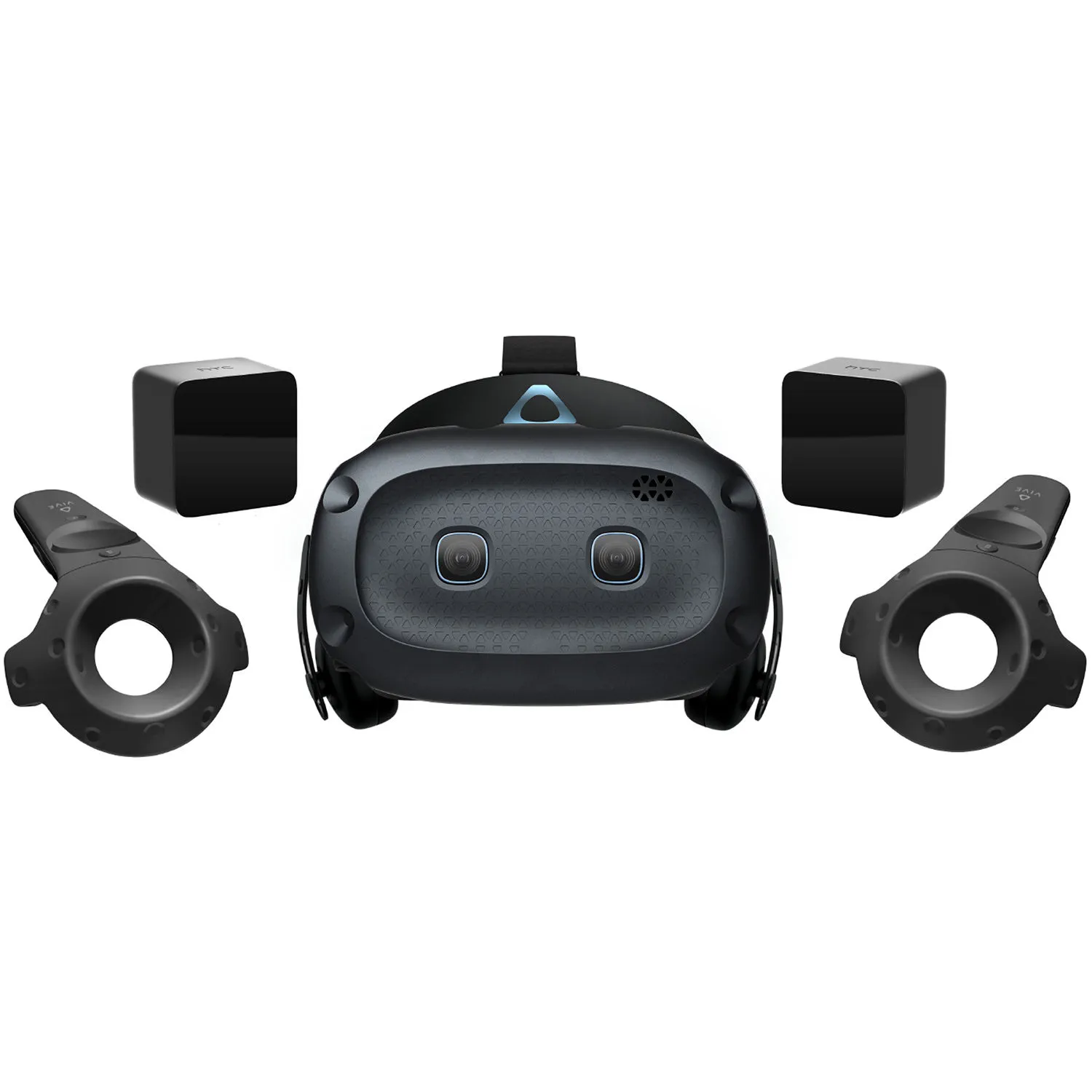
Features
The headset has a front facing camera that recognizes up to a 11’5” x 11’5” room-scale stage. Its precise 360-degree controllers, headset tracking, realistic graphics, directional audio and HD haptic feedback allow for realistic movements in the virtual world. This allows for the user to immerse themselves in the virtual experience as much as possible.
Since the user can become so immersed in the content, VIVE’s headset implements what they call the “Chaperone System”, which warns the user of the physical boundaries of their play area. Users can play freely while also avoiding injury.
The controllers paired with this headset have multiple input methods such as a trackpad and grip buttons. They also have a dual stage trigger that can be used for about six hours per charge.
Fun Extras
The headset is SteamVR powered, meaning users have access to over 1500 games for SteamVR, and any other extras the service provides. It also enables users to watch free VIVE videos on VIVEPORT and Steam. Video options include standard, 180-degree and 360-degree videos saved on your computer.
Although the headset itself doesn’t include integrated audio, VIVE offers customers the option to upgrade their audio with the VIVE Deluxe Audio Strap, going for $100.
Like we mentioned earlier, the VIVE headset isn’t wireless, but VIVE wants to make it as easy and comfortable for the customers to use the headset. They offer two VIVE Base Stations, otherwise known as the “Lighthouse Tracking System” – two black boxes that create a 360-degree virtual space up to 15’ x 15’ radius.
These boxes make the use of the headset practical at home by reducing the amount of wires and threads necessary to power the system. The Base Stations are also used to communicate with system accessories.
There’s no way we can talk about the Oculus without talking about the Oculus Quest and the Oculus Go. Both systems are all-in-one VR gaming systems, but their uses have gone above and beyond gaming.
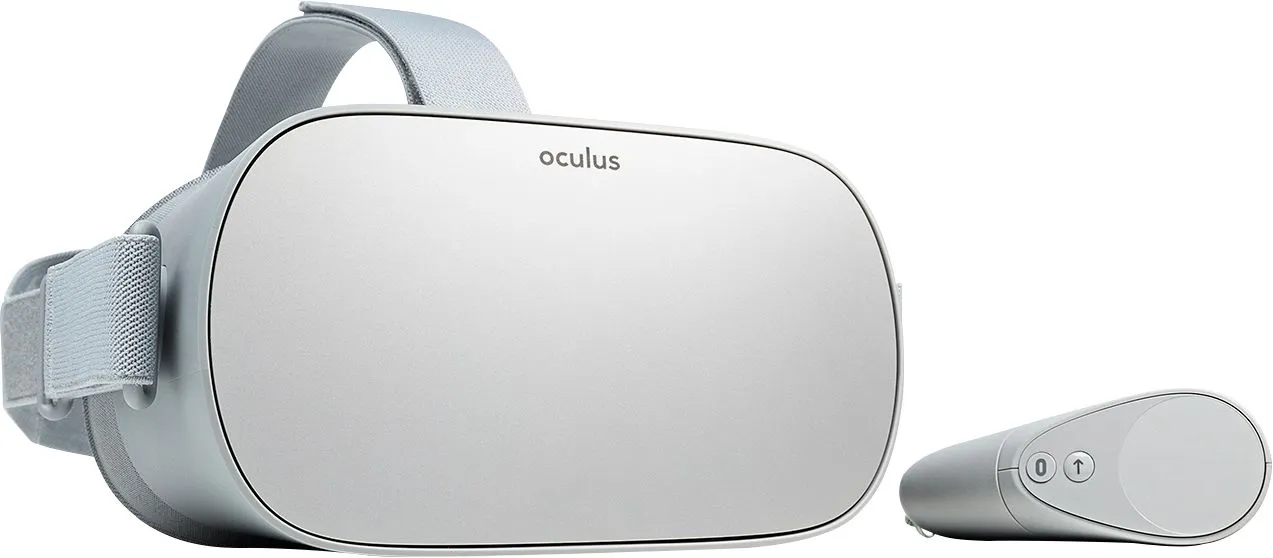
Oculus Go
This headset is priced based on storage – the 32GB version runs at $199, while the 64GB version goes for $249. Essentially, you get double the storage space for $50 more. The headsets have minimal screen-door effect and a 5.5” fast-switching RBG-stripe LCD with a resolution of 2560 x 1440, or 1280 x 1440 per eye, at 72 Hz.
Features
The Oculus Go has absolutely no need for a PC or wires to get it up and running, making it extremely convenient for anyone who is on the go, or looking to use the headset in multiple locations without hassle.
It features best in-class lenses that provide crystal clear optics, rich detail and vibrant colors for optimized 3D graphics. The device also includes built-in audio for a fully immersive experience, and a single, intuitive controller.
The headset itself is made out of breathable fabrics and injection foam molding for a light and comfortable wear. Meanwhile, its straps are soft and adjustable, allowing the device to stay on a user’s head securely and comfortably.
Fun Extras
The device is backwards compatible with most software developed for Samsung VR. Choosing the Oculus also opens up the world of the Oculus store, where all your VR needs are at your fingertips.
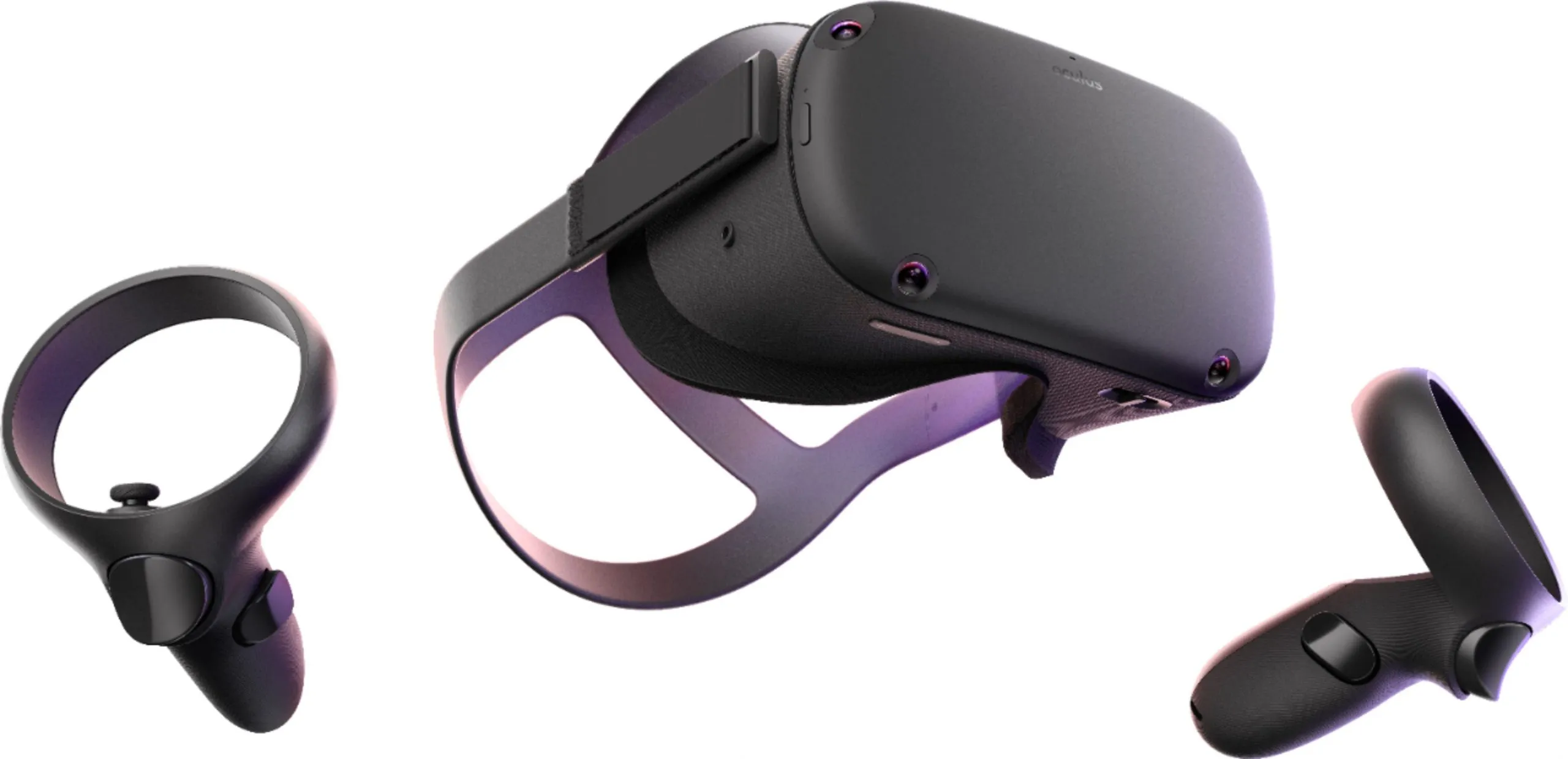
Oculus Quest
Like the Oculus Go, the Quest is priced based on storage space provided – $399 for 64GB and $499 for 128GB. The system features a resolution of 1440 x 1600 OLED pentile display per eye, at 72 HZ.
The Quest’s graphics chip is more powerful than Go’s, making it superior to its sibling in the graphics department. The headset weight 571g but supports their “next generation” lens, which helps enlarge the sweet spot of the lens and makes God Rays less prominent.
Features
The headset has a battery life of two to three hours and an inside out tracking system. The system consists of four, wide angle cameras on each corner of the headset. They track the headset spatially.
It also has the ability to adjust interpupillary distance, making it easier for the user to interact with the headset for longer periods of time, comfortably. The headset also has built-in audio but, for those who prefer in-ear headphones, Oculus has them available to purchase on their site.
Its controllers are the same, second-generation oculus touch controllers used by the Oculus Rift. The only changes that have been made to the controllers is that the tracking ring has been moved to the top controller to make room for the inside-out tracking system.
Fun Extras
Quest can work tethered to a pc, for better performance, using a USB type C to run PC VR games. The company will also be launching their own fiber optic cable specifically for this purpose.
Hand tracking technology is expected to make an appearance in early 2020, allowing users to interact with virtual worlds using their hands, rather than just controllers.
For added safety, the Oculus Quest features Passthrough, a technology that allows the user to see the real world in black and white as they’re playing, so they know they won’t hit into something and injure themselves or others.
Like the Oculus Go, choosing to go with an Oculus Quest headset also gives you access to the Oculus Store.
At $6,112 US, the Varjo VR-2 headset does not come cheap, but some might consider it well worth it. Although not as high quality as Varjo’s VR-2 Pro, it still offers amazing quality with resolution at over 20/20 vision. Its next-generation Bionic Display also features flicker-free screen refresh at 60/90 Hz, and it combines two 1920 x 1080 micro-OLEDs and two 1440 x 1600 AMOLEDs to achieve a seamless viewing experience.
The headset has infinite contrast ratio, which allows users to see the deepest blacks and even individually calibrated colors. Its dual lens design lends itself to the least amount of color irregularities, no ghost rays, and minimal reflections. The brand’s goal was to get as close as possible to replicating the human eye’s resolution.
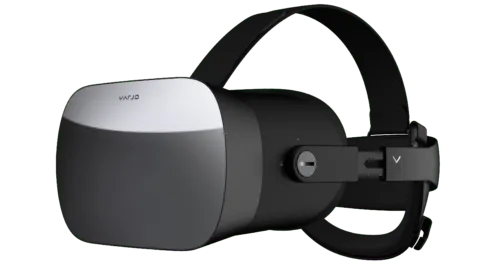
Features
Eye tracking is a fundamental feature in Varjo headsets. Many of these headsets are used by professionals in many fields because of its accuracy, and eye tracking provides a lot of data they need.
With faster and more accurate calibration, the Varjo’s eye tracking system is unmatched in accuracy and precision. The headset also has a 87-degree field of view and weighs 605g, without the headband.
The headset offers an active airflow system, an adjustable and detachable headband and head strap, two different sized face cushions, and automatic interpupillary distance. All of these features allow for comfortable and easy use of the headset, no matter who the user is or what their preferences are.
The Varjo VR-2 also offers hand tracking, is compatible with SteamVR and ART, and it connected by 10-meter long, thin and light optical fiber cables with USB-C.
Fun Extras
Varjo offers software and support service so that customers are able to properly learn how to use the headset and all of its functions. While the service is only free for a year, if a Varjo VR-2 Pro is purchased, the company also offers it with any device for an additional fee.
Google’s Cardboard VR headset is the most affordable of the bunch. Since that’s the case, it is highly marketed to regular consumers and people just finding out about the world of VR. With starting prices as low as $5.71, it’s the perfect way to get a taste of VR without making a commitment.
That being said, the quality isn’t great since all VR apps are being played from the user’s phone so, depending on your phone’s capabilities, the quality won’t be nearly as good as its competitors’. Its design is flimsy, more or less so depending on the price point, there are no head straps, and the lenses are dim lit and mute colors.

Features
The headset supports both iOS and Android, meaning that users have access to thousands of VR apps on Google Play and the iOS App Store.
Because the design of the headset is so simple, and because it’s meant for even the most unaware VR customers, its setup is quick and easy. However, it doesn’t have many extra features. You won’t find the option to adjust focal or pupillary distance, and there is no integrated audio.
Of course, there are many other headsets out there and, with companies like Apple trying to jump in on the VR action, there will be plenty more in the future. While each headset has its ups and downs, there’s no denying that each one is worth it in some way.
When choosing a headset, don’t let price points be the deterrent. Focus on features offered and visual quality, and whether they get whatever job you need done efficiently and appropriately. Remember: buying a headset is worth a one-time expense, using it to grow your brand is worth a lifetime of successes.
At CXR.Agency, we pride ourselves in being one of the top virtual reality technology companies. We want to help you create a virtual reality app that solves your problems and boosts your business. Send us an email to learn more about virtual reality cost, virtual reality design, virtual reality development, virtual reality development cost, virtual reality programming and/or virtual reality software.
We are a virtual reality development company that reimagines how people interact with brands. To disrupt the status quo and uncover values other virtual reality companies can’t find. To solve tomorrow’s business challenges in thoughtful, elegant ways. We aim to be strategic leaders in emergent virtual reality technology and innovators in virtual reality software development. Our mission is to arm businesses for digital revolution. Check out our VR case studies at CXR.Agency for more information.